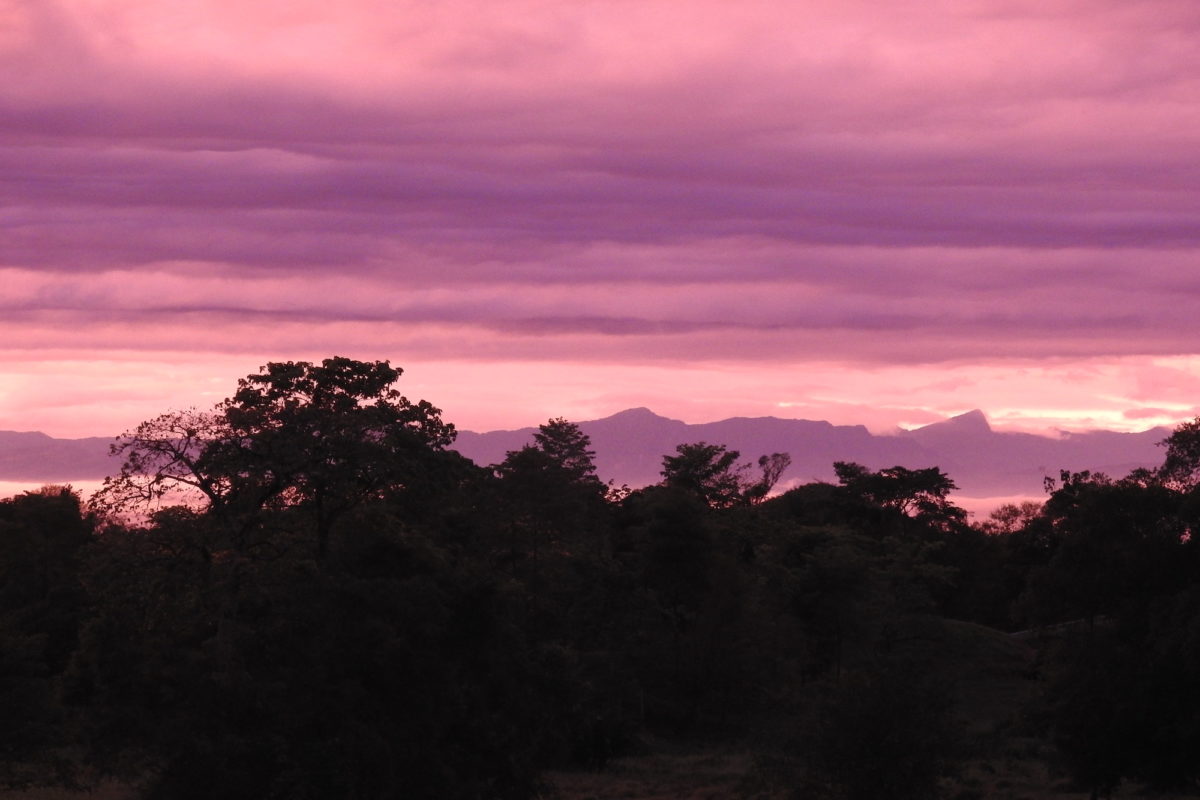- When Serranía de Las Quinchas Regional Natural Park was established in Colombia in 2008, thousands of campesinos were already living there on land previously dominated by paramilitaries.
- Many productive activities have been restricted and residents are requesting state support.
- There have been reports that the army is eradicating illicit coca crops while disregarding health and safety protocols put in place to combat COVID-19.
- Residents of the park say they have no means of making a living and are worried about illegal logging, land ownership and oil infrastructure in the area.
Between the departments of Boyacá and Santander in Colombia is one of the last remnants of tropical rainforest of the Middle Magdalena Valley. The Serranía de Las Quinchas is so environmentally important that on Dec. 16, 2008, the environmental authority responsible for much of the area decided to declare it a regional natural park.
Las Quinchas is also an Important Area for Bird Conservation (AICA), a significant carbon sink and a biodiversity hotspot. According to data from monitoring agency Corpoboyacá, it is home to 22 species of mammals, four species of amphibians, 18 species of reptiles and 92 species of flora. It is also habitat for several bird species endemic to Colombia, including the blue-billed curassow (Crax alberti), which is listed as critically endangered on the IUCN Red List. Others that are not endemic but are endangered, such as the military macaw (Ara militaris), in the vulnerable category, and the wattled guan (Aburria aburri), considered nearly threatened, also live there.
Despite its diversity, this protected area continues to experience serious social and environmental conflicts. Before the creation of the park, people were living there. Many of their activities were banned overnight, but productive alternatives were not provided with the same sense of urgency.
Moreover, Las Quinchas is intersected by oil and gas pipelines; there are still small areas of illicit crops; a battle is being waged against illegal logging; and the majority of campesinos (small-scale farmers) have not been able to gain titles to their land, which, by law, they can only sell to the state.
Campesinos living in park for years
One of the issues that campesinos have complained about in the regional park is the environmental management plan, which came into effect in 2016 and will expire in 2021. It has still not been implemented.
The plan provided for the creation of an administrative committee to guarantee a shared process of governance between Corpoboyacá and the campesinos. After four years, no progress has been made. Camilo Altamar, a lawyer who has provided the residents of the park with legal advice on several occasions, has a theory as to why this is. Altamar says it is possible that Corpoboyacá does not want to give too much information to communities about how the park is run, “because there are sensitive issues such as permits for forest use and the relationship with oil and gas companies that have pipelines running through the park.”

Altamar adds that Corpoboyacá declared the area a park under a strict conservation regime, as if it was virgin forest, and “did not consider the social implications of the conservation measures it put in place. This has created considerable tensions between society and conservation.”
Sandra Patricia Rodríguez, president of the community action committee of the village of La Cristalina, says that there have been many projects since the park was created, but that none of them have made it off paper. “The management plan is about to expire and we have no idea what these projects are,” Rodríguez said. “There has been so much misinformation that we don’t even know where the park or its buffer zone begins.”
Herman Amaya, who became director of Corpoboyacá several months ago, says he recognizes that there is room for improvement: “I understand that Las Quinchas is problematic. The plan has to be adjusted because there is not enough room in the budget: there is no way to guarantee the administration of an area of over 40,000 hectares [99,000 acres] with only 6,400 million pesos [$1.7 million].”
Amaya says that one of the main problems with the park is that its management has been left solely in the hands of Corpoboyacá. He says that this poses an institutional challenge due to the area’s complexity, remoteness, ongoing conflicts and history of armed struggle. According to Amaya, the fact that the plan has not been implemented consistently has led to mistrust among the communities.
He says that people in the protected areas need to have a stable income and that he plans to implement a payment scheme for ecosystem services, in which campesinos are employed as forest rangers, and that he will look into productive projects that allow for the sustainable use of timber and non-timber resources.
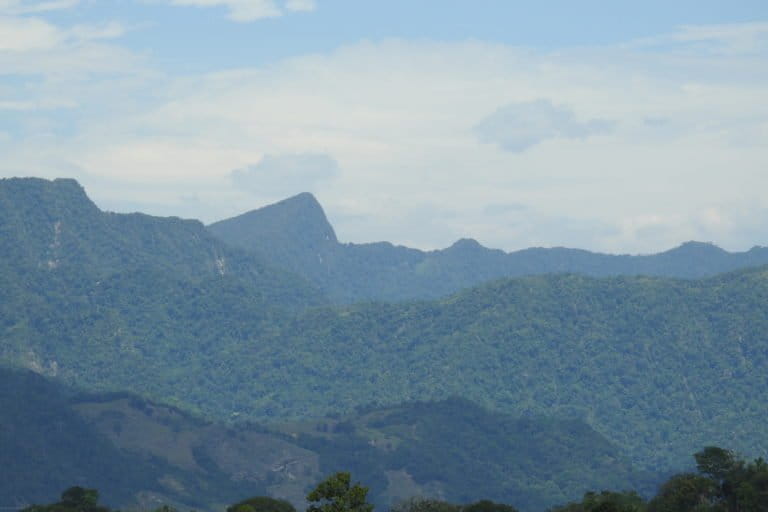
“I believe that in situ conservation efforts are more successful when they are carried out with communities rather than without them. When there are institutional changes, it is the communities who will help give these measures continuity. According to the 2019 report by the Intergovernmental Science-Policy Platform on Biodiversity and Ecosystem Services (IPBES), areas protected by campesinos and indigenous peoples are the least impacted,” Amaya says.
Eradication of crops during the pandemic
“The park has very complex dynamics.” This is the phrase repeated time and time again by environmental authorities, the army, campesinos, and academics who work in this regional park situated between the municipalities of Puerto Boyacá and Otanche.
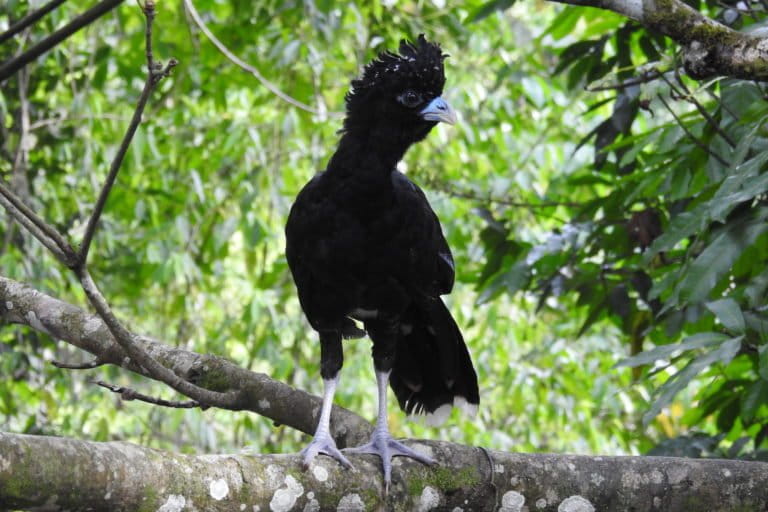
The region was the financial center of the Self-Defense Group of Puerto Boyacá, one of the first paramilitary groups in the country. The geographic isolation, combined with the wealth of natural resources, ensured the funding of the organization until it disbanded. When its leaders demobilized following the 2005 Justice and Peace Law, other members refused to abandon the business. Albeiro Giraldo Gómez, also known as Don Alonso, a commander of the area with enough autonomy to reject demobilization, continued running the drug-trafficking business for years until he was killed in a confrontation with police at the end of 2013.
This history of armed conflict has caused problems for many campesinos in the area who used to make a living off coca cultivation. They had no alternative, especially since many other productive activities were banned when Las Quinchas was declared a protected area. Currently, there are 5,346 people living in Las Quinchas, many of whom arrived there before the creation of the park and others who have moved there from the departments of Caldas, Cundinamarca, Boyacá and Tolima.
Residents of the regional park told Mongabay Latam that some families still worked in coca production, but that this activity is steadily decreasing. “There is only a very small amount of coca being cultivated in the park; only a few families are doing it so as not to die from starvation,” says one campesino, who asked to remain anonymous.
Despite this, in recent weeks, inhabitants of villages such as La Arenosa, in Puerto Boyacá, reported that military personnel had arrived to eradicate coca crops.
According to data compiled by the Institute of Hydrology, Meteorology and Environmental Studies (IDEAM), given to Mongabay Latam by Corpoboyacá, between 2000 and 2005 (before the creation of the park), 5,001 hectares (12,358 acres) of forest were destroyed in the Department of Boyacá; of that figure, 230 hectares (568 acres) were in Serranía de Las Quinchas. Between 2017 and 2018, deforestation in the department was reduced to 321 hectares (793 acres), of which 35 hectares (86 acres) were inside the protected area**. Amaya from Corpoboyacá says the army manually eradicated just 2 hectares (5 acres) of coca crops in the park this year but could not identify the producers. He says it is important to find crop substitution mechanisms.
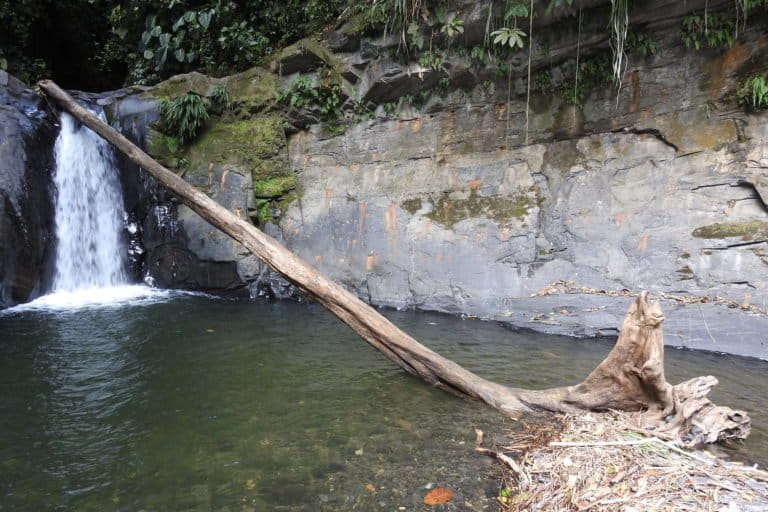
Residents say they’re concerned about two things: the first is that the state has not followed through on its promise of social and productive programs for the voluntary substitution of crops, as it agreed to do in the 2016 Peace Agreement, so these raids leave some people without a livelihood. Second, the campesinos say the soldiers have not been wearing masks, breaking current health and safety protocols.
“Puerto Boyacá does not have any cases of COVID-19 but the army is in contact with many communities and come from places like Cimitarra and Santander, where cases have been reported. We are afraid because we don’t have any medical facilities here,” said one campesino.
“The army is carrying out Operation Artemisa to prevent deforestation but it is combining this with the forced eradication of crops. The communities are also asking why they come to this area when the real deforestation is going on in other places. They are calling this ‘an environmental false positive,’” says Mónica Amador, environmental anthropologist and coordinator of the BioResilience Project, which examines the long-term resilience of Colombian forest ecosystems in post-conflict areas, including Serranía de Las Quinchas Regional Natural Park.
Mauricio Gutiérrez, president of the community action committee of the village of La Arenosa, says that troops from the Rafael Reyes battalion arrived there without following any health and safety protocols. “We want the state to implement the crop substitution projects that were agreed on in the peace process. Our fear is that they will persecute those cultivating illicit crops when it is the only activity which can sustain them at this time,” he says.
Mongabay Latam reached out to the army for comment about these protocols, but it did not respond by the time of publication. The army did state, however, that its men had not carried out crop eradications in the 8,900 hectares (22,000 acres) under its jurisdiction, which make up some of the 21,000 hectares (51,900 acres) of the regional park.
The army also said that troops are “performing operations of territorial control, security and defense, in order to tackle crimes of illegal mining, deforestation and wildlife trafficking.” This is part of Operation Artemisa, an initiative launched by President Iván Duque that consists of a military offensive against environmental crimes that threaten to destroy the country’s ecosystems.
Regarding health and safety measures, they said the army had established a strict health and safety protocol to prevent the contagion and spread of COVID-19.
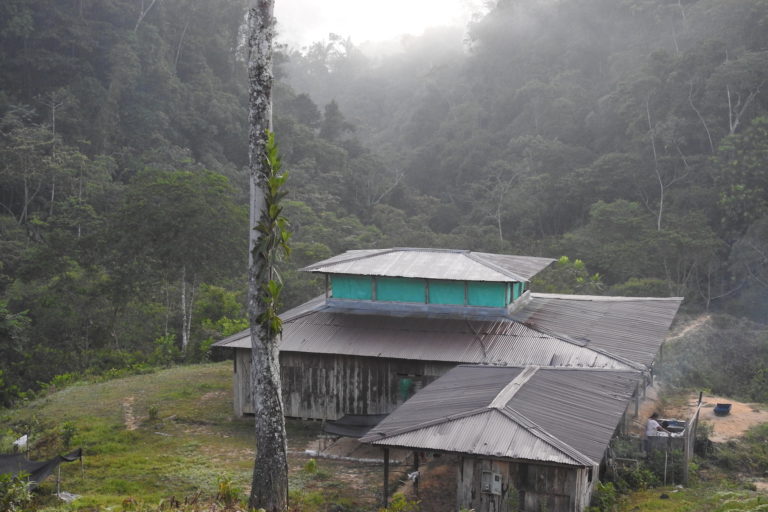
But the Reyes Battalion does not belong to the brigade referenced in the statement. Mongabay Latam was informed that the battalion belongs to Brigade 14 of the Seventh Division. Mongabay Latam got in touch with the Seventh Division, which stated, without referring specifically to the Reyes Battalion, that its troops were not carrying out eradication of crops in Serranía de Las Quinchas, but in the south of the department of Bolívar.
By the time this article was published, there was been no concrete response from the army confirming or denying the activities of the battalion mentioned by the campesinos.
The never-ending problem of land titles
The inhabitants of Las Quinchas face numerous other problems, one of which is that of land ownership, as before the area was designated a park there were already people living there.
“We want to solve the problem of ownership and be able to buy from those who have acquired rights. It is prohibited to sell land in a natural park to anyone but the state. We will work on verifying the history of each property, if it has been inherited, if it is registered, if it has been evaluated by the Agustín Codazzi Geographic Institute [IGAC], and then we will make an offer to buy,” says Corpoboyacá’s Amaya.
It needs to happen soon.
According to Estefany Grajales, a representative of the United Communities of Colombia Foundation (COUNCO), illegal land sales have been taking place. “We don’t know who is buying from the campesinos,” she says.

Grajales says she’s also worried about rumors concerning plans for a new gas pipeline that will dissect the regional park, and that an oil block, called Quinchas, is being exploited within the protected area.
Amaya says he knows nothing about either of these matters but adds that permission would not be granted to build a new gas pipeline because, by law, such initiatives are prohibited in a regional park. He says the same prohibition would apply to oil concessions.
Oil, logging and broken promises
The concern about oil in Las Quinchas is not unfounded. Residents of the area say the oil and gas pipelines that already pass through the park are not well maintained, and that this has been the case since before the designation of the protected area. They also recall the oil spill of June 2018 that contaminated the river of La Cristalina, one of the main tourist attractions in Las Quinchas.

According to Grajales, the final results of the cleanup process are still unknown and locals fear there will be a new oil spill because the pipes are in very bad condition.
Communities were promised a bridge so that the river would no longer cut them off when it flooded, an initiative that would also support ecotourism projects, “but this has yet to happen, and the communities want to take legal action,” says lawyer Camilo Altamar. Sandra Rodríguez, president of La Cristalina’s community action committee, reiterates this point. Rodríguez is also a member of the Pico Azul Association, an organization that promotes community ecotourism and was inspired by, and named after, the endemic blue-billed curassow, which can often be seen in Serranía de las Quinchas despite being critically endangered. Some of these birds were even taken care of by campesinos when the river was contaminated with oil.
“We need a bridge so that we can transport our produce: milk, avocado, yucca and plantain. So that our children can go to school. When the river is flooded, they can only attend classes once a week,” Rodríguez says. She says that companies’ social contributions never reach the communities and that they feel abandoned by the state.
“We have started to look after the mountains ourselves. We no longer cut down trees or hunt, and the only land we cultivate is land that was cleared previously. We are reforesting the area on our own, without the help of the government or the companies,” Rodríguez says, adding that the campesinos have yet to receive any compensation for the oil spill that occurred two years ago, despite the fact that they had to halt all tourism activities for 18 months.
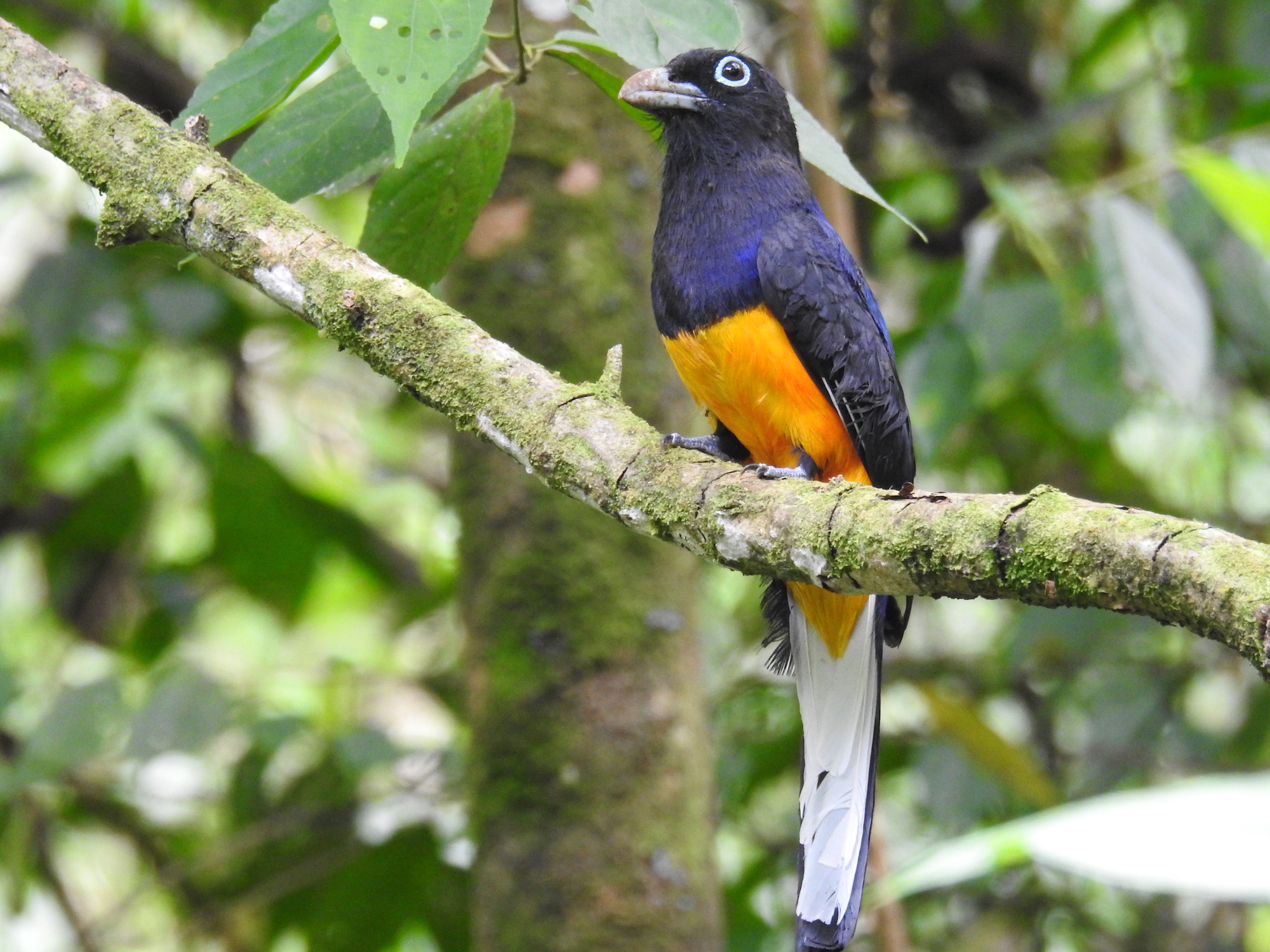
Amaya says the pipeline is a national infrastructure project, and although it passes through the regional park, it is the National Authority for Environmental Licenses (ANLA) that is responsible for this case. He says he is trying to organize a meeting with ANLA to find out what is happening with the disciplinary process.
The director of the regional environmental authority says he is aware that tackling Las Quinchas’ social and environmental conflicts is one of the biggest challenges he will face during his administration. He says he is fully committed to doing so, but adds that he needs the full cooperation of the state, because as well as social and environmental problems, the region needs support in the areas of health, education, basic sanitation and employment — issues that go beyond the capacities and functions of the regional environmental authority.
Amaya also says he will confront the problems of illegal deforestation that are having a profound impact on the area. He says this is one of the issues that most concerns him. “Communities need to be able to have forest plantations in buffer zones that they can cultivate in a sustainable way and also have viable access to the market. There are many problems with corporations but we need the support of other state entities,” he says.
The campesinos of Serranía de Las Quinchas say they hope the government will provide them with support and will allow them, in the words of the Ministry of the Environment, “to align productivity with conservation.” Amaya says his priorities are to establish a park management committee, encourage beekeeping to strengthen forest resilience, support environmental education in schools and communities, promote ecotourism, and resolve the issue of land ownership.
**This paragraph was corrected on June 4, 2020, to reflect that the figures correspond to the area of land that had been deforested rather than the area of land planted with illicit crops.
Banner image: The landscape in Serranía de Las Quinchas Regional Natural Park. Image by Camilo Altamar.
